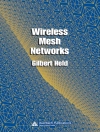This book provides detailed and practical information for practitioners to understand why they should choose certification. It covers the pros and cons, and shows how to design to comply with the specifications (FIPS-140, SP800 documents, and related international specs such as AIS31, GM/T-0005-2021, etc.). It also covers how to perform compliance testing. By the end of the book, you will know how to interact with accredited certification labs and with related industry forums (CMUF, ICMC). In short, the book covers everything you need to know to make sound designs.
Although this was once a fairly niche topic, it is no longer so. Other industries—banking, military, healthcare, air travel, and more—have adopted FIPS certification for cryptographic products. The demand for these services has grown exponentially. Still, the available skills pool has not grown. Many people are working on products with zero usable information on what to do to meet these standards and achieve certification or even understand if such certification applies to their products.
What You Will Learn
- What is FIPS-140? What is the SP800 standard?
- What is certification? What does it look like? What is it suitable for?
- What is NIST? What does it do?
- What do accredited certification labs do?
- What do certification consultants do?
- Where and when is certification required?
- What do FIPS-140 modules look like?
- What are the sub-components of FIPS-140 modules (RNGs, PUFs, crypto functions)? How does certification work for them?
- What are the physical primitives (RNGs, PUFs, key stores) and how do you handle the additional complexity of certifying them under FIPS?
- What are the compliance algorithms (AES, SP800-90 algos, SHA, ECDSA, key agreement, etc.)?
- How do you design for certification (BIST, startup tests, secure boundaries, test access, zeroization, etc.)?
- How do you get CAVP certificates (cert houses, ACVTs)?
- How do you get CMVP certifications (cert houses, required documents, design information, security policy, etc.)?
Who This Book Is For
Hardware and software engineers or managers of engineering programs that include any form of cryptographic functionality, including silicon vendors, library vendors, OS vendors, and system integrators
Tabela de Conteúdo
Chapter 1: FIPS140.- Chapter 2: FIPS Technical Details.- Chapter 3: Security Levels (1, 2, 3, 4).- Chapter 4: Subordinate Specs.- Chapter 5: Working with Accredited Certification Labs.- Chapter 6: Documentation Requirements.- Chapter 7: Algorithm Validation.- Chapter 8: Industry Forums.
Sobre o autor
David Johnston is an engineer at Intel working on cryptographic hardware used in Intel CPUs and other silicon products. He has been directly involved in the development of the SP800-90 and FIPS140 standard revisions and is active in FIPS-related industry forums—he has several FIPS and CAVP certifications. David spent 30 years in various hardware and software roles and is the author of
Random Number Generators, Principles and Practices.
Richard Fant performs security assessments for Intel products and platforms by evaluating the FIPS 140-3 compliance and design strategy for the FPGA Business Unit (Programmable Solution Group). He also helps lead the Intel FIPS Co E (Center of Excellence) across other Intel business units. Richard has two bachelor’s degrees from the University of Texas: (Computer Science and Mathematics) as well as a master’s degree in Cybersecurity from Syracuse University. He has worked in the semiconductor industry for 20+ years for companies such as Motorola, AMD, and Intel. He also worked at Atsec Information Security performing FIPS evaluations for various semiconductor manufacturers.
In his free time, Richard likes to engage in his other passions: half-marathons and travel. To date, he has run a half-marathon on every continent except Antarctica. While visiting those faraway places, he frequently enjoys testing the laws of entropy at the casinos located there. He has lived in Austin, Texas his entire life and yet has racked up over 2 million frequent flyer miles from traveling about the world for work and fun.












